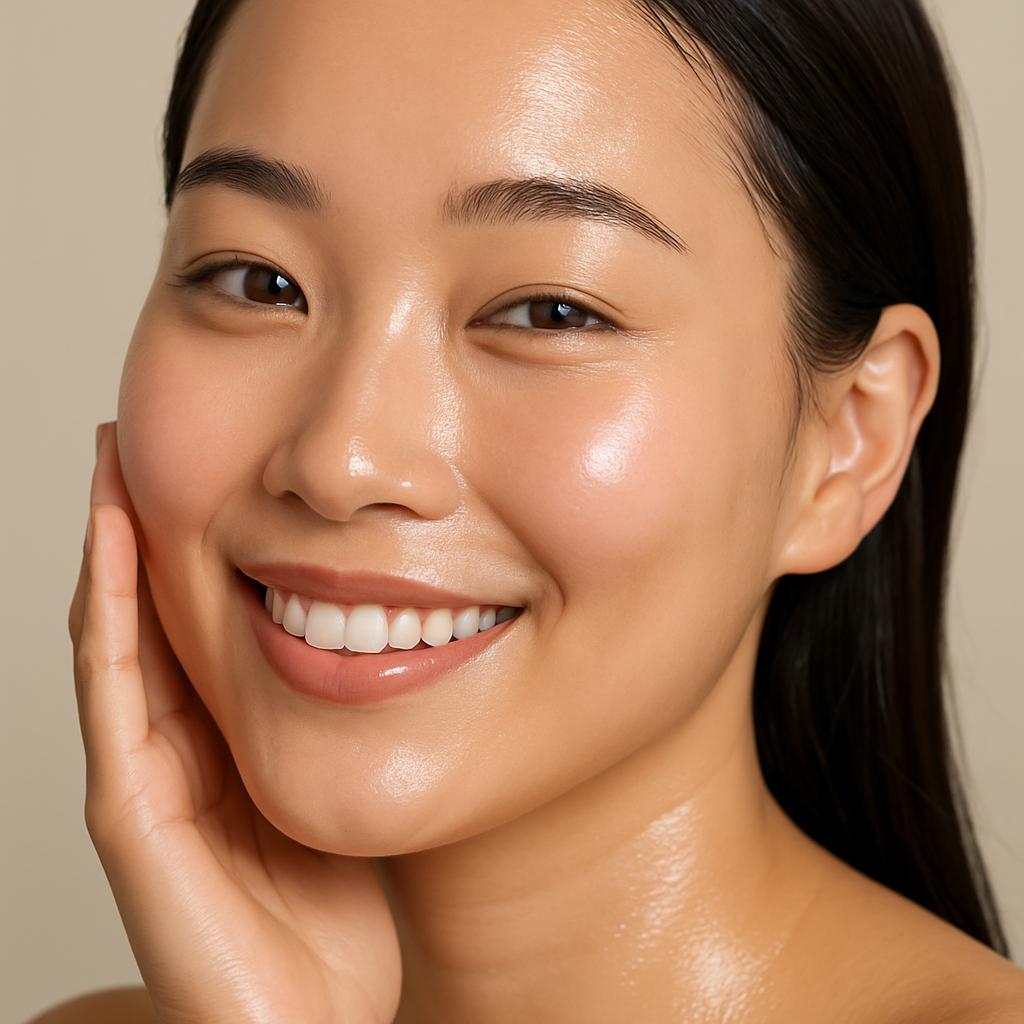

Introduction
Autumn signals transition not only in weather but also in skin biology. As humidity drops and temperatures fluctuate, the skin loses water faster, becomes more vulnerable to irritation, and shows early signs of dullness. From a dermatologist’s perspective, this season is not just about adding a heavier cream;
It requires a comprehensive shift in routine. Patients often underestimate how rapidly skin physiology reacts to environmental changes. When the air dries, the stratum corneum struggles to maintain its barrier. That weakened barrier allows more irritants and allergens to penetrate, while also increasing transepidermal water loss. In my clinical practice, I see a clear rise in cases of eczema flare-ups, post-summer pigmentation, and early fine lines during fall. For that reason, autumn becomes a critical season to reinforce the barrier, recalibrate exfoliation, and integrate targeted treatments that prepare the skin for harsher winter conditions.
Deep Hydration and Barrier Reinforcement
Hydration is not simply about applying a thicker cream. True skin balance relies on reinforcing the barrier with ingredients that mimic natural lipids. Ceramides, cholesterol, and fatty acids act like the “mortar” between skin cells, preventing cracks from forming in the barrier. Patients who switch to products with these elements often report smoother texture within weeks. Hyaluronic acid, while popular, works best when combined with occlusive agents that seal in water. A standalone hyaluronic serum evaporates easily in dry air if it lacks support.
I advise layering: a humectant to draw water, an emollient to soften, and an occlusive to lock it in. For those who have undergone procedures such as laser resurfacing during summer, barrier support is even more critical in fall. Without it, healing slows and redness persists longer. A dermatologist-guided regimen emphasizes strategic layering, not just random hydration, to create resilient, calm skin during seasonal transition.
Gentle Cleansing and Thoughtful Exfoliation
Patients often maintain aggressive cleansing habits from summer, when oil production is higher. In autumn, this habit strips the skin and amplifies dryness. Switching to a cream or milk cleanser preserves essential lipids. Over time, these lipids maintain microbial balance, which is vital for preventing acne and dermatitis. Exfoliation requires similar restraint. Mechanical scrubs or frequent use of strong acids can disrupt the barrier.
Instead, dermatologists recommend controlled exfoliation with lactic acid or polyhydroxy acids once or twice a week. These agents not only clear dead skin cells but also hydrate at the same time. When patients push exfoliation too far in autumn, I often see micro-cracks on the skin surface that lead to stinging with moisturizers or serums. Adjusting to a more measured rhythm ensures that skin stays receptive to actives without losing balance. In a professional setting, chemical peels are still appropriate, but the strength and frequency should be tailored to the season.
Sunscreen Remains Essential in Autumn
One of the biggest misconceptions is that sunscreen is optional once summer ends. In reality, UVA radiation penetrates deeply and remains consistent year-round. Autumn skies may look softer, but photoaging does not pause. Hyperpigmentation, melasma, and fine lines progress silently in this season, especially for patients with lighter skin types or a history of pigmentary disorders.
From a dermatologist’s perspective, sunscreen remains the cornerstone of preventive care. The difference in autumn lies in formulation: richer sunscreens with moisturizing bases provide dual benefits of UV protection and hydration. Patients who skip sunscreen in autumn often return in winter with worsened pigmentation that becomes harder to treat. I encourage patients to view sunscreen as an anti-aging cream, not just a summer shield. Consistent use through fall creates a foundation for healthier results in any advanced treatments planned during the cooler months.
In-Clinic Treatments for Autumn Skin
Autumn provides an ideal window for dermatological procedures. The reduced sun exposure lowers the risk of post-inflammatory hyperpigmentation, making treatments like fractional laser, radiofrequency microneedling, and medium-depth chemical peels safer. These interventions target pigmentation, fine lines, and textural irregularities that build up over summer. At my practice, many patients schedule collagen-stimulating treatments in October or November so that their skin looks refreshed by winter holidays.
HydraFacials or oxygen-based infusions also work well to replenish hydration while clearing residual summer damage. Importantly, autumn procedures should not overload the skin. A well-designed treatment plan staggers energy-based devices and chemical modalities to avoid overwhelming the barrier. Dermatologists view this season as a time to reset, giving skin the resources it needs to repair accumulated damage before harsher winter stress arrives.
Nutrition, Lifestyle, and Internal Support
Topical care alone cannot solve autumn dryness. Internal hydration and diet matter significantly. I advise patients to increase water intake and incorporate omega-3 fatty acids, which enhance skin lipid production. Seasonal foods rich in antioxidants, such as pumpkin, persimmons, and dark leafy greens, complement topical antioxidants like vitamin C. Sleep and stress control also play crucial roles.
Cortisol spikes from stress can delay barrier recovery and increase inflammation, which shows up as flare-ups of acne or eczema. Many patients underestimate lifestyle in their skin health equation, yet dermatologists consistently see stronger outcomes when skincare regimens pair with mindful living. Even simple steps such as reducing hot showers, using a humidifier, and wearing soft, breathable fabrics prevent micro-irritations that worsen dryness in autumn.
Sensitive Zones: Lips, Eyes, and Neck
Delicate areas often reveal the earliest signs of seasonal stress. The lips lack oil glands, so they chap quickly in dry air. I recommend patients use emollient lip balms with SPF and avoid constant licking, which worsens dryness. The periorbital region becomes crepey and irritated faster than other areas due to thin skin. Rich eye creams with peptides or ceramides protect this zone.
The neck, often neglected, responds poorly to over-exfoliation. Gentle hydration combined with light massage enhances circulation and prevents premature sagging. From a clinical standpoint, these areas may also benefit from targeted treatments such as light laser toning or injectables that boost elasticity. Ignoring these regions creates contrast with a well-treated face, so dermatologists emphasize a holistic approach that includes every vulnerable area.
Long-Term Dermatologist Guidance
The most sustainable autumn skincare is guided, not improvised. Dermatologists tailor regimens based on individual concerns: some patients need pigment correction, others require acne control, and some simply need barrier reinforcement. Consistent follow-up allows us to adjust products and treatments as the season evolves.
Autumn is also the time for annual skin checks, especially for patients with sun damage or family history of skin cancer. Detecting lesions early makes intervention more effective. In practice, I encourage patients to view dermatology (“디에이피부과”) not as a one-time visit but as an ongoing partnership. Building continuity improves trust, ensures long-term results, and prevents the frustration of trial-and-error routines.
Conclusion
Autumn challenges the skin in unique ways, but with the right strategy, it becomes a season of renewal. The focus must remain on barrier health, controlled exfoliation, daily sun defense, and strategic in-office treatments. Combined with supportive lifestyle changes and attention to sensitive zones, these steps help patients transition gracefully into the colder months.
Dermatologists see autumn not as a time of decline but as an opportunity: the chance to reset skin health, repair summer damage, and prepare for winter resilience. For patients, investing in a smart autumn skincare plan is one of the most effective ways to maintain radiant, youthful skin all year.
RELATED POSTS
View all

